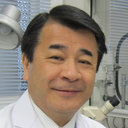Protective effects of bilberry and lingonberry extracts against blue light-emitting diode light-induced retinal photoreceptor cell damage in vitro.
Keywords
Abstract
BACKGROUND
Blue light is a high-energy or short-wavelength visible light, which induces retinal diseases such as age-related macular degeneration and retinitis pigmentosa. Bilberry (Vaccinium myrtillus L.) and lingonberry (Vaccinium vitis-idaea) contain high amounts of polyphenols (anthocyanins, resveratrol, and proanthocyanidins) and thus confer health benefits. This study aimed to determine the protective effects and mechanism of action of bilberry extract (B-ext) and lingonberry extract (L-ext) and their active components against blue light-emitting diode (LED) light-induced retinal photoreceptor cell damage.
METHODS
Cultured murine photoreceptor (661 W) cells were exposed to blue LED light following treatment with B-ext, L-ext, or their constituents (cyanidin, delphinidin, malvidin, trans-resveratrol, and procyanidin B2). 661 W cell viability was assessed using a tetrazolium salt (WST-8) assay and Hoechst 33342 nuclear staining, and intracellular reactive oxygen species (ROS) production was determined using CM-H2DCFDA after blue LED light exposure. Activation of p38 mitogen-activated protein kinase (p38 MAPK), nuclear factor-kappa B (NF-κB), and LC3, an ubiquitin-like protein that is necessary for the formation of autophagosomes, were analyzed using Western blotting. Caspase-3/7 activation caused by blue LED light exposure in 661 W cells was determined using a caspase-3/7 assay kit.
RESULTS
B-ext, L-ext, NAC, and their active components improved the viability of 661 W cells and inhibited the generation of intracellular ROS induced by blue LED light irradiation. Furthermore, B-ext and L-ext inhibited the activation of p38 MAPK and NF-κB induced by blue LED light exposure. Finally, B-ext, L-ext, and NAC inhibited caspase-3/7 activation and autophagy.
CONCLUSIONS
These findings suggest that B-ext and L-ext containing high amounts of polyphenols exert protective effects against blue LED light-induced retinal photoreceptor cell damage mainly through inhibition of ROS production and activation of pro-apoptotic proteins.


